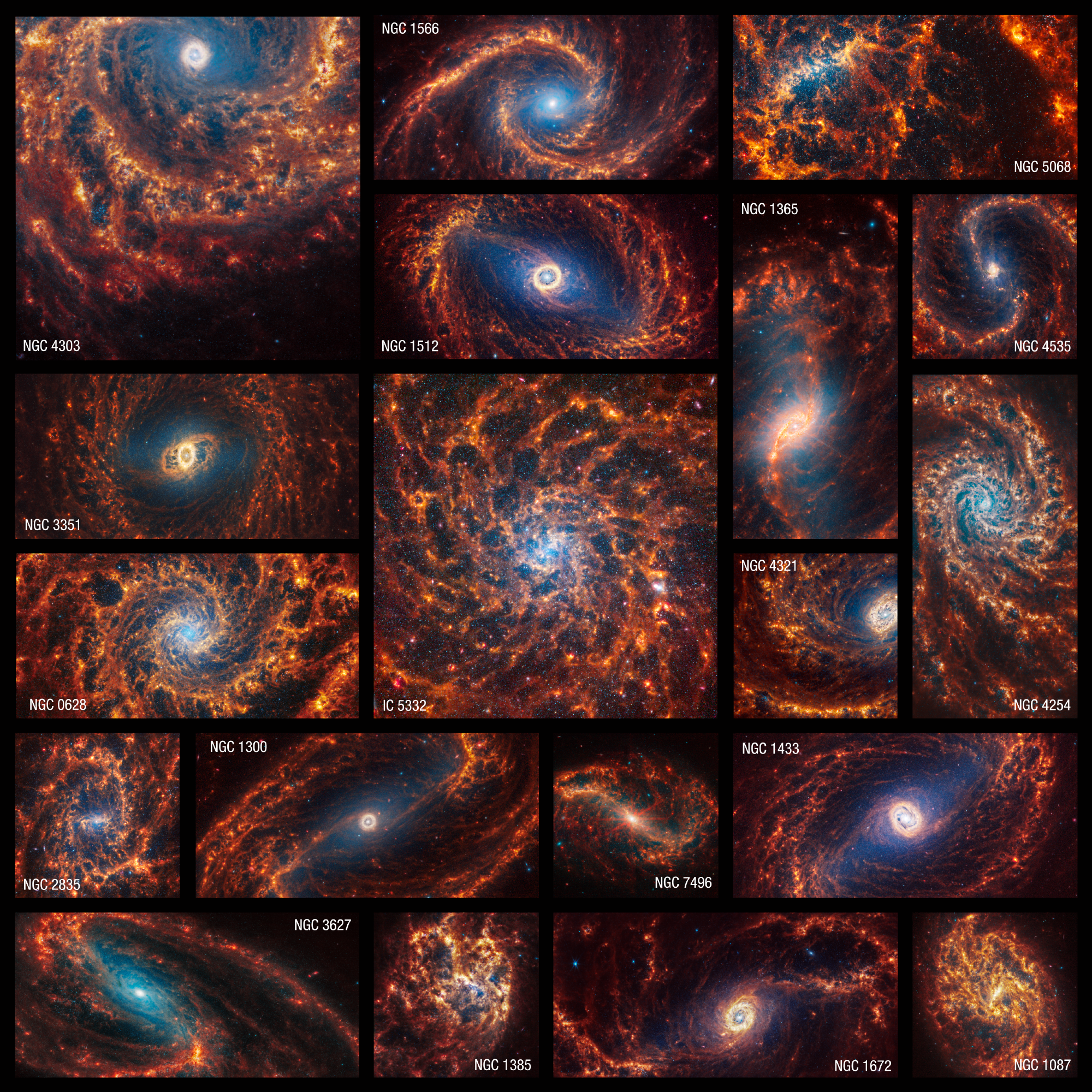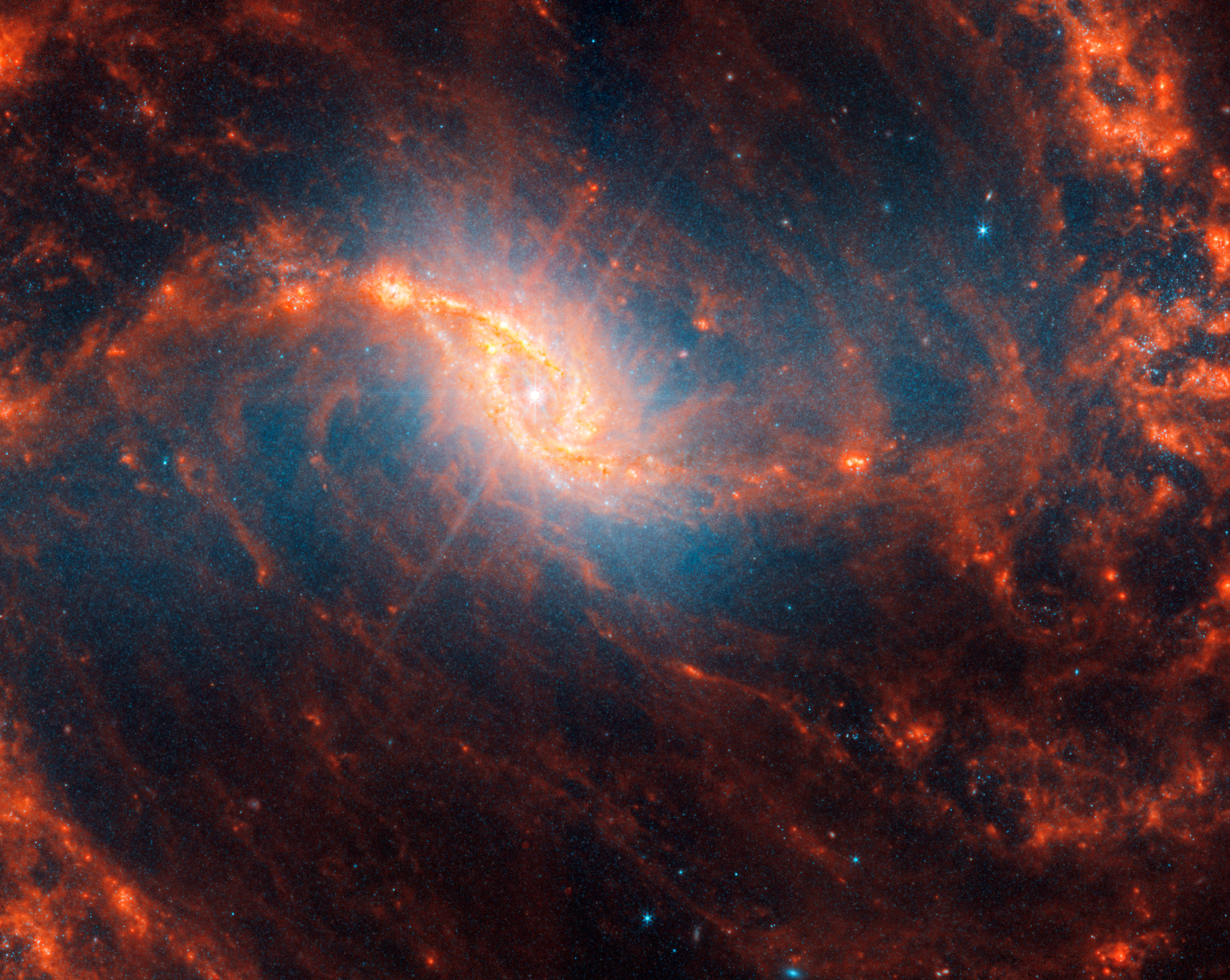Spiral galaxies, like our own Milky Way, are fairly common in the Universe. And – without showing too much favoritism – they are also insanely pretty. New observations from JWST on relatively near galaxies have provided even more insights into the spiral structures in images that are beyond spectacular.
The observations were conducted as part of the Physics at High Angular resolution in Nearby GalaxieS (PHANGS) program. More than 150 astronomers worldwide participated in it and it uses a variety of observational facilities from the Hubble Space Telescope to the Atacama Large Millimeter/submillimeter Array (ALMA).
The goal is to understand spiral galaxies and JWST has just delivered the infrared motherlode, with bubbles and filaments of gas at incredible resolution. It allows us to see these structures at the smallest scales ever observed, delivering crucial insights into the star formation processes in these galaxies.

The newly released images of the 19 spiral galaxies.
Image Credit: NASA, ESA, CSA, STScI, Janice Lee (STScI), Thomas Williams (Oxford), PHANGS Team
“I feel like our team lives in a constant state of being overwhelmed – in a positive way – by the amount of detail in these images,” Thomas Williams, a postdoctoral researcher at the University of Oxford, said in a statement.
The images show holes in the distribution of gas, created by one or more stars going supernova, pushing the gas away as well as gas filaments that expand well beyond the spiral structure that we can see with our naked eye.
“These structures tend to follow the same pattern in certain parts of the galaxies,” Erik Rosolowsky, a professor of physics at the University of Alberta, added. “We think of these like waves, and their spacing tells us a lot about how a galaxy distributes its gas and dust.”

The stunning NGC 1365 as seen by JWST.
Image Credit: NASA, ESA, CSA, STScI, Janice Lee (STScI), Thomas Williams (Oxford), PHANGS Team
Spiral galaxies are believed to form from the inside out, so there is also a lot of attention given to the central regions of these objects. There sits a supermassive black hole and in some of these objects, they are bright. Some are so bright, they create the characteristic diffraction spike of oversaturated foreground objects.
“That’s a clear sign that there may be an active supermassive black hole,” said Eva Schinnerer, a staff scientist at the Max Planck Institute for Astronomy in Heidelberg, Germany. “Or, the star clusters toward the center are so bright that they have saturated that area of the image.”
The data coming from the PHANGS team is incredible. On top of the images, the researchers also released a catalog of roughly 100,000 star clusters. That is the largest to date and they invite other researchers to get involved.
“The amount of analysis that can be done with these images is vastly larger than anything our team could possibly handle,” Rosolowsky emphasized. “We’re excited to support the community so all researchers can contribute.”
All the high-resolution images can be accessed here.
Source Link: Spiral Galaxies Like You Have Never Seen Before In New JWST Images